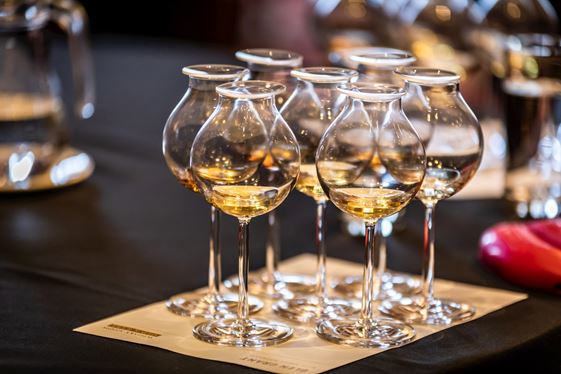-
Gordon & MacPhail Old and Rare
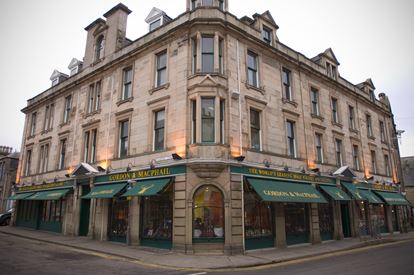
Back in the middle of the 20th century, very few distilleries were bottling their own single malts, but visionary G&M director George Urquhart – aka Mr George – continued and expanded his father’s work. He filled spirit from distilleries across Scotland into casks that he had sourced – mostly old-fashioned sherry transport casks – correctly predicting the rise of single malt and the importance of great wood in its development. He then bottled these whiskies, creating some of the first available single malts from distilleries like Glen Grant, Strathisla and Longmorn.
Gordon & MacPhail have continued this tradition and filling and bottling over the years, helping to define the modern independent bottler. However, the simply labelled, unassuming distillery bottlings are often forgotten. Once you look closer and notice their vintages and bottling dates, a range of incredibly old, well-aged and comparably reasonably priced whiskies is revealed. Their lower bottling strength often puts cask-strength fans off, but it doesn’t detract from the incredible quality of the whiskies, revealing extra depths after years in cask and bottle.
We don’t think enough people know about these bottles, and this class aims to change that by showcasing some of the best examples of more recent years, distilled between 1953 and 1972 – the golden years of whisky production.
The Whisky Exchange ambassador Billy Abbott, and Diego Lanza and Jason Vaswani from The Whisky Exchange Old and Rare Spirits team will lead this tasting.
Glen Grant 1953 60 Year Old, Gordon & MacPhail, 40%
Glen Grant 1966 45 Year Old, Gordon & MacPhail, 40%Glen Grant is one of the best known success stories from Mr George’s time at the helm of Gordon & MacPhail. It rapidly grew to become Italy’s most popular single malt – a position it still holds today – although with a focus on young spirit. However, G&M didn’t bottle all of its casks young, keeping many for decades, giving us an insight into how the distillery’s spirit changes over time.
Strathisla 1963 48 Year Old, Gordon & MacPhail, 43%
Strathisla 1972 40 Year Old, Gordon & MacPhail, 43%
Longmorn 1964 50 Year Old, Gordon & MacPhail, 43%Without the Gordon & MacPhail distillery-label bottlings of Strathisla and Longmorn, the distillery’s single malts would be almost unknown to whisky fans. Even today, distillery bottlings are relatively scarce, and long-aged examples are non-existent. They’re very different spirits, showcasing different sides of the traditional Speyside character – Strathisla is lighter and fruit-forward, while Longmorn is big and cereal focused, with a famous pink-grapefruit note in many bottlings.
Glenlivet 1955 56 Year Old, Gordon & MacPhail, 43%
Glenlivet is one of the most famous distilleries in the world, but it’s rare to see a truly long-aged whisky from its own warehouses. Gordon & MacPhail’s stocks of old whisky from the distillery are almost as famous in whisky circles, and the combination of old-fashioned sherry casks and old-fashioned spirit shows a very different side to the distillery’s whisky.
-
Longmorn
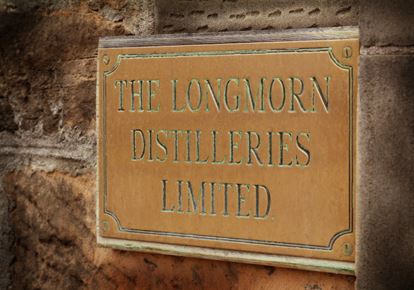
Longmorn is one of the Scotch whisky blenders' favourite malts, used as a ‘top dresser’ for adding something special to their blends, and it’s best known in the wider world as one of the key components of the Chivas Regal range of blended whiskies. However, there’s much more to Longmorn than its modern incarnation.
As a single malt, it has developed a cult following among whisky aficionados as a hidden treasure of Speyside, especially the older vintages from its golden years – whiskies distilled between the mid-1960s and early 1970s.
In this class we dive deep into the flavours of Longmorn to discover what makes the distillery’s older whiskies so special. We’re tasting across different vintages, bottlers and maturation casks, but with a constant leitmotif: the omnipresent rich but elegantly fruity flavour that is the trademark of the spirit distilled in this era. This line-up will show you why many whisky fans hold the secret of how amazing Longmorn is close to their chests.
Show founders Sukhinder Singh, Jonny McMillan and Angus MacRaild will be joined by The Whisky Exchange ambassador Billy Abbott, Old and Rare Spirits Manager Diego Lanza and catawiki's whisky expert Jeroen Koetsier.
Longmorn 10 Year Old Hill Thompson, bot.1960s, 43%.
Angus MacRaild – When we think of the great Longmorns today, we tend to focus on the 1960s' and early 70s' single casks bottled at great ages. I've always adored this bottling because it illustrates the young Longmorn distillate in all its naked, fruit-driven, mineral glory. A brilliant example of whisky making and the perfect demonstration of how brilliant Longmorn can be in youth as well as maturity.
Longmorn 1970 Berry Brothers, bot.1998, 43%
Jonny McMillan – My day job buying casks for Berry Bros & Rudd has given me a thirst to seek out some of our older bottlings, and I've been after this Longmorn for a while. The bottling is invitingly dark, showing its sherry maturation and I think old-style Longmorn works amazing well against powerful fresh sherry casks. Lucious, rich and chewy – I think this is one of BB&R's finest bottlings from the 1990s.
Longmorn 1970 36 Year Old Single Malts of Scotland, 56.1%
Sukhinder Singh – I started seeking out Longmorn after I fell in love with this distillery back in the early 1990s. It was a distillery that no one really spoke about, but I was mesmerised by the pink-grapefruit pith characteristic that has become the distillery's signature for me. While Longmorn is now famous for old vintages from Gordon & MacPhail, most of which are from sherry casks, this is from a refill sherry cask. I really like this style, as the wood does not overtake the underlying flavour of the spirit.
Longmorn 15 Year Old Cadenhead Dumpy, bot.~1980, 46%
Angus MacRaild – I chose this as a counterpart to the Hill Thompson 10 Year Old and it should have a similar profile: bottled from refill wood at a good drinking strength, only now a little older. It’s another fascinating look at the Longmorn distillery profile from these years at an age and with a style we don't normally experience. This is an extremely rare bottling and one I've never tried before, but on paper it should be delicious.
Longmorn 1969 Signatory Vintage 10th Anniversary, bot.1998, 56.3%
Jonny McMillan – In my experience, 1969 is one of the very best years for Longmorn. The casks from that year all tend to show an exuberant tropicality with vibrant citrus notes, and generally have a wonderful mouthfeel. I adore this style of whisky – at once enormously complex and yet incredibly easy to quaff.
Longmorn 1973 25 Year Old Hart Brothers, Port Wood, 55.5%
Sukhinder Singh – I tried this once in Germany many moons ago, as most of the bottles of this expression ended up there. I remember it being an extremely big whisky, with the rich port flavours coming through on the finish. These Longmorns from before 1976 are really quite unique and this is no exception, as it is quite unusual to find malts fully matured in Port casks from this era. I look forward to reacquainting myself with it.
-
Old-Style Peat
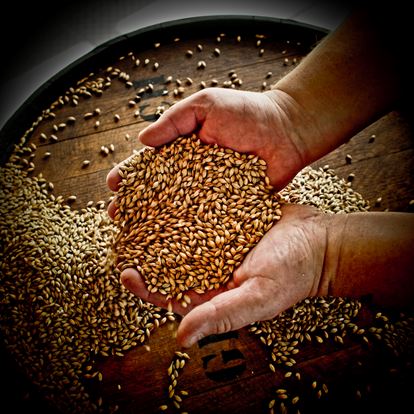
The flavour of peat is one of the most misunderstood and least explored aspects of whisky. Most contemporary peated malts display an up-front, ashy and aggressively smoky style of peat, but this has not always been the case.
This tasting will explore an era of whisky production when many distilleries operated their own floor maltings and had their own peat sources.
It features some stunning examples of single malts that express starkly differing aspects of peat flavour. From the deep, herbal and heathery peat of Orkney, via the more farmyard and medical styles of Glen Garioch and Ardmore, all the way to the powerfully chiselled, sharp and purely smoky style of 1970s' Port Ellen. A journey through history and geography with some stunning, rarely available whiskies.
Show founders Sukhinder Singh, Jonny McMillan and Angus MacRaild will be joined by The Whisky Exchange ambassador Billy Abbott, Scotch Whisky Research Institute senior scientist Frances Jack, and photographer, author and smoky whisky expert Marcel van Gils.
Highland Park 1960 17 Year Old, 43%
Angus MacRaild – This is an early official bottling of Highland Park, released as part of a series of vintage-stated bottlings. Some were from plain wood, while others like this one were from sherry. The quality was almost universally superb in this series.
I've chosen it because it's long been a favourite bottling of mine. The combination of rich, fruity, beautifully old-style sherry sits in perfect balance with the Highland Park distillery character. Most of all, the unique flavour of Orkney peat sits at the heart of the whisky. Rich, earthy, drying, herbal and distinctly heathery – it's an exquisite example of old-style, deep-cut Orcadian peat and a powerfully illuminating counterpart to the more smoky Islay style.
Ardmore 1977 Samaroli 35th Anniversary, bot.2003, 45%
Jonny McMillan – Ardmore is one of my favourite distilleries, and the Highland peat it uses shows a different style of smoky flavour to the west-coast distilleries. The peat character here is earthy, bordering on smoked haddock and bonfire ash, a style I really adore. This was bottled by the maestro of independent bottling – Silvano Samaroli – to celebrate the 35th anniversary of his company.
Glen Garioch 1972 Oddbins, bot.1990s, 43%
Sukhinder Singh – Glen Garioch’s spirit were very heavily peated up until 1976, and are quite different to any other malts. I have tried similar vintages but not this one, and I am expecting something like a sherried Longmorn mixed with some big fat peat and a herbal element. This is a rare bottling done for Oddbins back in the mid 1990s, and was selected by a chap called Grant Ramage. He was the senior spirits buyer and had a great relationship with Glen Garioch owner Morrison Bowmore at the time. Even though it was bottled from a single cask, sadly it was reduced to 43% before bottling.
Port Ellen 1974 22 Year Old, Signatory Silent Stills, cask #6754, 59.2%
Angus MacRaild – This is a lesser-known example of Port Ellen from a transitionary vintage for the distillery. The 1974s tend to exhibit a balanced style, with some of the residual fruitiness of earlier years combined with the more assertive, petrolic and coastal peatiness which would define its later years. I think this will make a fascinating and extremely delicious counterpart to the Highland Park – two sides of the peat coin.
Brora 32 Year Old, Diageo Special Releases 2011, 54.7%
Jonny McMillan – Perhaps the most distinctive style of peated whisky comes from the legendary distillery of Brora – a style which can best be described as ‘farmy'. In my option its spirit is among the most complex and cerebral whisky ever produced, and generally takes many happy hours of contemplation to get your head around – time well spent with glorious whisky.
Glenlochy 1965 37 Year Old Dun Eideann, 46.8%
Sukhinder Singh – There have not been many Glenlochys from 1965, and I have only tasted the Signatory Silent Stills bottling, which I found to be extremely complex. I am expecting this to be like an old Islay malt, with fruit and peat nicely integrated.
-
Waxy Whisky
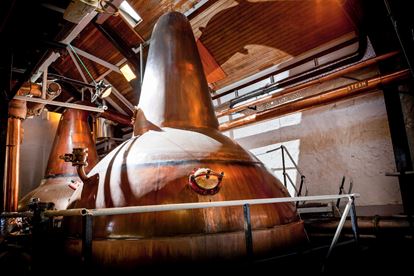
One of the key hallmarks of older style single malts is the elusive characteristic we call 'waxiness'. It can manifest as a flavour, or a group of flavours that includes minerality, spiciness and medicinal phenols, but also as an impression of texture and mouthfeel.
Older-style distillates made using floor-malted barley, longer ferments and direct-fired distillation often display this rare, waxy profile – a style which eludes many contemporary malts. The unifying feature of all these whiskies is their extraordinary quality and a consistently beautiful expression of waxiness in single malt.
Show founders Sukhinder Singh, Jonny McMillan and Angus MacRaild will be joined by The Whisky Exchange ambassador Billy Abbott, Roe and Co head distiller Lora Hemy and whiskyfun.com creator Serge Valentin.
Glen Ord 30 Year Old from the Diageo Special Releases 2003, 58.7%
Angus MacRaild – This is a modern-era classic and one of my all-time favourites from the Special Releases series. Old-style Glen Ord can display powerfully full-bodied, waxy and fruity highland style character – indeed, its distillate in these vintages was not so dissimilar to that of Clynelish. Still underrated to this day, this beautiful single malt is – to my mind – the perfect illustration of waxiness in whisky.
Clynelish 1972 24 Year Old Rare Malts, 61.3%
Jonny McMillan – If one says ‘waxy whisky', I believe most whisky nerds immediately think of Clynelish, and for me the 1972 Rare Malts is one of the most iconic bottlings from this fan-favourite distillery. It's been years since I've tried this bottling, but I still remember it brimming with waxy honey notes – a superlative example of early-70s’ Clynelish.
Balblair 40 Year Old Single Malts of Scotland, 42.8%
Sukhinder Singh – This came from one of three casks of Balblair 1969 that I purchased back in the early 2000s. I married two casks and bottled them under my Anniversary Selection label and released the other cask as part of the Single Malts of Scotland banner a few years later. It was the first time I had tried such old Balbair and loved the rich fruits with the waxy notes. This was bottled just in time, as there is an element of old wood that could have become too dominant with more time in the cask.
Balvenie 1974 15 Year Old Signatory, bottled from a marriage of casks, 57.1%
Angus MacRaild – This bottling has flown under the radar for many years, but it is of stunning quality. Not many people tend to think of Balvenie as waxy, but the 1974 vintages – and some earlier examples – frequently displayed the profile. This bottling has it in spades, and I think it is one of the very best of the 1974-vintage Balvenies. A superb illustration of old-style, distillate-driven waxiness in Scotch whisky.
Convalmore 1962 31 Year Old Cadenhead's Authentic Collection, 48.9%
Jonny McMillan – Perhaps the most underrated of the closed distilleries, I think Convalmore is a truly remarkable dram that shows the best of waxy 1960s' character. This bottle is from The Perfect Collection of Richard Gooding – a recent high-profile auction – and having tried a sister cask bottled at 46%, I was very keen to get my hands on this bottle. I'm really excited to try it!
Clynelish 12 Year Old Distillery Bottling, Red/Green Label, bot.1980s, 57%
Sukhinder Singh – Clynelish is another love of mine and I have many great bottles in my stash. I have tried most of the older versions of the 12-year-old except this rare expression with a bright red and green label. Similar to the Gordon and MacPhail label but this is actually a distillery bottling. Clynelish is the daddy of waxiness so I am quite excited to try this.

